
Desktop Survival Guide
by Graham Williams


|
DATA MINING
Desktop Survival Guide by Graham Williams |

|
|||
Colour |
R provides a collection of predefined colours and supports the generation of colours using numerous colour models. Colours are useful in plots to help distinguish different elements. The RColorBrewer provides a number of palettes, limited to 12 colours. It is generally thought difficult to distinguish more than about 12 colours.
The list of named colours is obtained from the colours function:
> head(colours()) |
[1] "white" "aliceblue" "antiquewhite" [4] "antiquewhite1" "antiquewhite2" "antiquewhite3" |
> tail(colours()) |
[1] "yellow" "yellow1" "yellow2" "yellow3" [5] "yellow4" "yellowgreen" |
There's 657 colours to choose from!
You can make a selection of colours using the colors.plot function from the epitools package. A plot is displayed with the range of named colours, and we can click on different colours with the left mouse button (we hear a beep for each click), then click the right mouse button when done. The list of chosen colours will be returned from the function.
> library(epitools) > mycols <- as.character(colors.plot(locator = TRUE)$color.names) > mycols |
[1] "tomato3" "wheat1" "indianred2" [4] "khaki" "darkolivegreen1" "cyan" [7] "lightpink" |
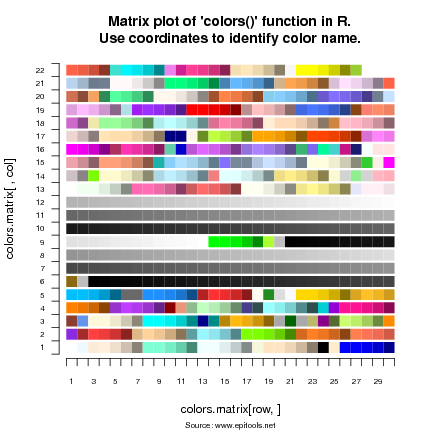
To explore automatic selection of colour ranges:
> library(colorRamps) > blue2green2red(15) |
[1] "#0000CC" "#0000FF" "#0055FF" "#00AAFF" "#00FFFF" [6] "#2BFFD5" "#55FFAA" "#80FF80" "#AAFF55" "#D4FF2B" [11] "#FFFF00" "#FFAA00" "#FF5500" "#FF0000" "#CC0000" |
> image(matrix(1:150, 10), col = blue2green2red(15)) |
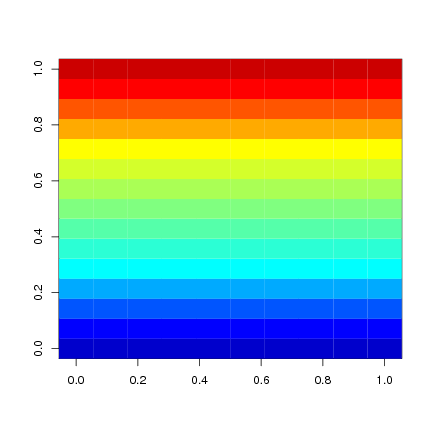
The Roption[]col option of a plot is used to change any default colours used by a plot. You can supply a list of integers which will index the output of a call to the palette function. The default palette is:
> palette() |
[1] "black" "red" "green3" "blue" "cyan" [6] "magenta" "yellow" "gray" |
> image(matrix(1:80, 10), col = palette()) |
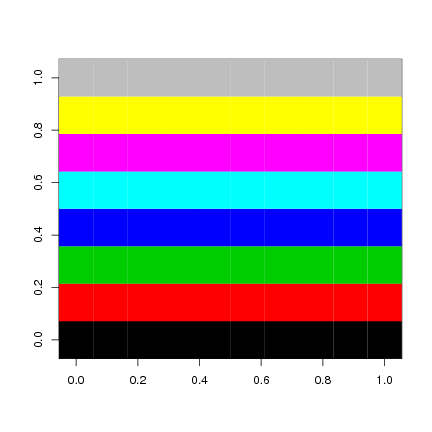
You can generate a contiguous colour palette using cm.colors.
> cm.colors(10) |
[1] "#80FFFFFF" "#99FFFFFF" "#B3FFFFFF" "#CCFFFFFF" [5] "#E6FFFFFF" "#FFE6FFFF" "#FFCCFFFF" "#FFB3FFFF" [9] "#FF99FFFF" "#FF80FFFF" |
> image(matrix(1:100, 10), col = cm.colors(10)) |
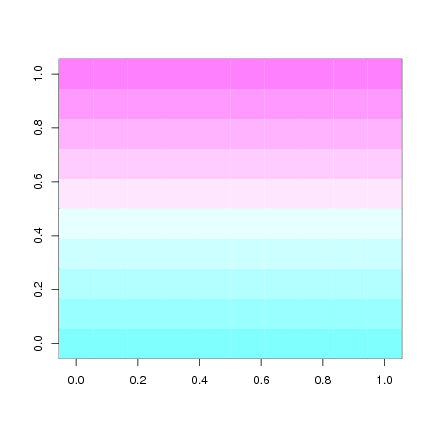
Similarly, to generate a sequence of colours from a rainbow:
> rainbow(10) |
[1] "#FF0000FF" "#FF9900FF" "#CCFF00FF" "#33FF00FF" [5] "#00FF66FF" "#00FFFFFF" "#0066FFFF" "#3300FFFF" [9] "#CC00FFFF" "#FF0099FF" |
> image(matrix(1:100, 10), col = rainbow(10)) |
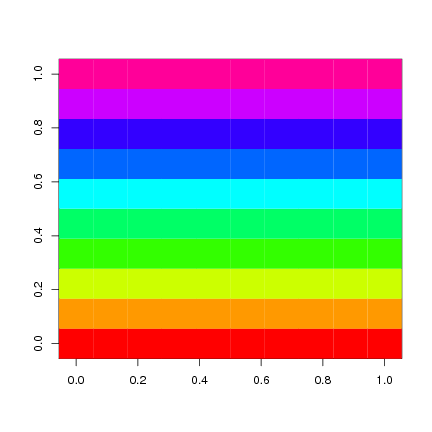
To generate a sequence of six grays you can use the gray function:
> gray(seq(0.1, 0.9, len=6)) |
[1] "#1A1A1A" "#424242" "#6B6B6B" "#949494" "#BDBDBD" [6] "#E6E6E6" |
> image(matrix(1:60, 10), col = gray(seq(0.1, 0.9, len=6))) |
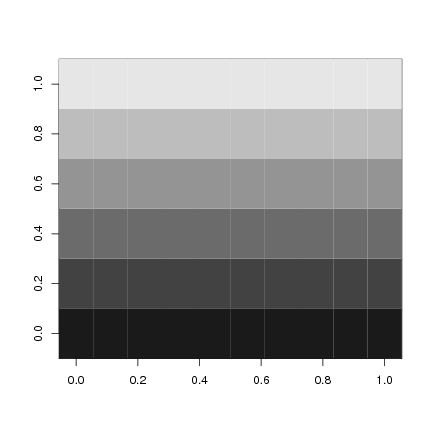
To generate a reasonable collection of 15 colours:
> library(RColorBrewer) > mycolors <- brewer.pal(12,"Set3") > mycolors <- c(mycolors, "blue", "green", "yellow") > mycolors |
[1] "#8DD3C7" "#FFFFB3" "#BEBADA" "#FB8072" "#80B1D3" [6] "#FDB462" "#B3DE69" "#FCCDE5" "#D9D9D9" "#BC80BD" [11] "#CCEBC5" "#FFED6F" "blue" "green" "yellow" |
> image(matrix(1:150, 10), col = mycolors) |
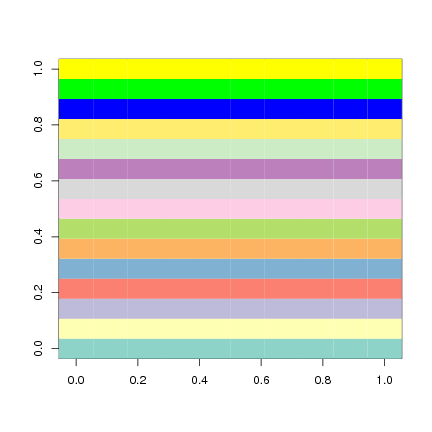
Copyright © Togaware Pty Ltd Support further development through the purchase of the PDF version of the book.